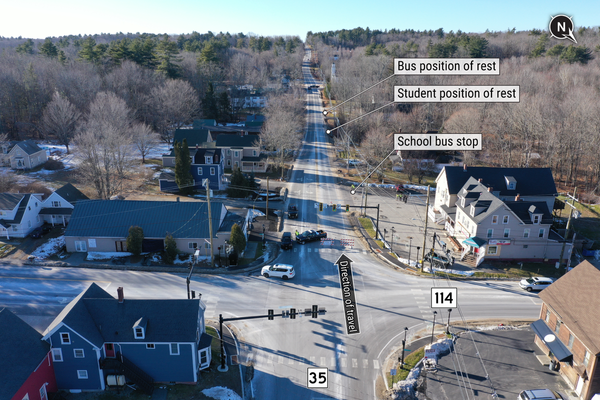
Colin Cantwell, who has died aged 90 after suffering from Alzheimer’s disease, brought his skills as a concept artist and model designer to the Star Wars film universe by creating spaceships, stations and vehicles that have passed into sci-fi legend.
The X-wing Starfighter, used by the Rebel Alliance in its conflict with the Galactic Empire throughout the original trilogy, and regarded as the “ship of heroes”, became a particular favourite with fans. Its split wings in attack mode form the letter after which it is named, an idea that came to Cantwell in a British pub when he saw darts being thrown and took on board the back-end design.
In the director George Lucas’s opening film, Star Wars (1977, later retitled Star Wars: Episode IV – A New Hope), the quick, darting X-wing is piloted by Luke Skywalker, played by Mark Hamill, as he destroys the Death Star, the Galactic Empire’s deep-space mobile battle station, which Cantwell designed and sculpted. The “meridian” trench across the battle station that plays such an important role in the film was in fact the result of a happy accident in Cantwell’s fabrication of the piece.

“When I was working with the mould, I noticed the two halves had shrunk at the point where they met across the middle,” he explained. “It would have taken a week of work just to fill and sand and refill this depression. So, to save me the labour, I went to George and suggested a trench. He liked the idea so much that it became one of the most iconic moments in the film.”
Another of Cantwell’s creations was the TIE fighter, with a ball cockpit and hexagonal panels, and notable for its shriek while travelling at high speed in dogfights, striking fear into enemies of the Galactic Empire.
His other designs for the original Star Wars movie included the Tantive IV, serving as the personal starship of Princess Leia (Carrie Fisher) while attempting to outrun Darth Vader (Dave Prowse), and the dagger-shaped Star Destroyer, which chases it.
Some of Cantwell’s creations – and developments of them – continued into future trilogies and spin-offs, although he turned down a job in the Lucasfilm company’s effects shop, Industrial Light & Magic.
He had already made a significant contribution to sci fi on screen as a member of the special photographic effects team under Douglas Trumbull on 2001: A Space Odyssey (1968). Cantwell became close to the director, Stanley Kubrick, and conceptualised various scenes. Most dramatically, he was responsible for the opening title sequence, accompanied by Richard Strauss’s composition Also Sprach Zarathustra, which depicts a barely visible moon moving down as the Earth rises above it, then the sun rising above the Earth.
After Star Wars, Cantwell worked with the director Steven Spielberg on Close Encounters of the Third Kind (1977), providing technical dialogue and concept art of aliens descending on Devil’s Tower.
He designed spacecraft for the original 1979 film of Buck Rogers in the 25th Century, then was hired as a
computer graphics design consultant on WarGames (1983), about a young hacker unwittingly almost causing nuclear disaster. Cantwell programmed the 12 giant war room wall screens showing the “missile warning” drama unfold. The “screens” were actually 6x8in Hewlett Packard desktop computer monitors enlarged with effects, Cantwell having worked as a consultant for HP. He went on to program software for the company, taking its monitors from just a few colours to 5,000.
Colin was born in San Francisco, California. His mother, Fanny (nee Hanula), was a riveter during the second world war, and his father, James Cantwell, was a graphic artist. After the family moved to Arizona, Colin was diagnosed with tuberculosis and partial retinal detachment, and confined to a dark room in their home for two years. He was an inveterate reader of books about space and combined this with an interest in animation, which he studied for a degree in applied arts from the University of California, Los Angeles, graduating in 1957.
A third passion, architecture, led him to be accepted by Frank Lloyd Wright at his desert-camp school in Arizona. But Wright died in 1959, before he could start, and Cantwell, wanting to learn only with the “master of modernism”, instead found contract work at the US space agency, Nasa. In its jet propulsion laboratory, he helped to create words and graphics for educational programmes about early uncrewed space flights.

In 1969, during the Apollo 11 space mission, the first to land humans on the moon, Cantwell listened to communications between Nasa and the astronauts to convey information to the American newscaster Walter Cronkite, who presented the CBS network’s live coverage.
Cantwell had also worked for Graphic Films in Los Angeles, which made films for Nasa, the US air force and others. When Trumbull, who was his colleague there, was hired by Kubrick as a special effects supervisor for the 2001 movie, Cantwell joined his crew in the last six months of filming.
In 1973, Cantwell directed and designed models for the futuristic Voyage to the Outer Planets, the first film shown at the big-screen Omnimax dome theatre in San Diego, before moving on to Star Wars.
Cantwell settled with his partner Sierra Dall in Colorado Springs, and wrote two sci-fi novels, CoreFires (2016) and CoreFires II (2018).
She survives him.
• Colin James Cantwell, concept artist and designer, born 3 April 1932; died 21 May 2022







